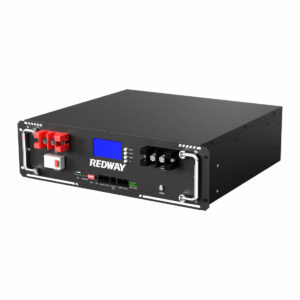Why do UPS batteries go bad so fast?
UPS batteries degrade quickly due to environmental stress, improper cycling, and chemical aging. High ambient temperatures accelerate internal corrosion, while frequent partial discharges cause sulfation in lead-acid types. Lithium-ion variants face electrolyte decomposition at elevated voltages. Deep discharges below 20% state-of-charge (SoC) permanently reduce capacity. Pro Tip: Maintain 20°C ambient and keep lead-acid batteries above 50% SoC to extend lifespan by 30-40%.
What environmental factors damage UPS batteries?
Heat and humidity are primary battery killers. Temperatures above 25°C double degradation rates for every 10°C increase. High humidity corrodes terminals, increasing internal resistance. For example, a UPS battery at 35°C lasts only 18 months versus 4+ years at 20°C. Pro Tip: Install thermal sensors and position UPS units away from server exhaust vents.

Battery chemistry reacts violently to thermal stress. At 30°C, lead-acid batteries lose 50% capacity within 12 months instead of 36 months at 20°C. Why does this happen? Elevated temperatures accelerate plate corrosion and electrolyte evaporation. VRLA (Valve-Regulated Lead-Acid) batteries particularly suffer from thermal runaway risks when ventilation is inadequate. Always prioritize cooling infrastructure—every 5°C reduction below 25°C adds 6-8 months to service life. Consider lithium iron phosphate (LiFePO4) batteries for high-temperature environments, as they tolerate up to 45°C without significant degradation.
How does discharge cycling affect battery health?
Depth of discharge (DoD) directly impacts cycle count. Lead-acid batteries discharged to 80% DoD provide 500 cycles, but 50% DoD extends this to 1,200 cycles. Lithium-ion handles deeper discharges better—3,000 cycles at 80% DoD. A hospital UPS cycled daily to 70% DoD might need replacement in 2 years versus 5+ years with 30% DoD.
Each discharge cycle causes incremental damage through plate sulfation (lead-acid) or solid electrolyte interface (SEI) growth (lithium-ion). What many users don’t realize: brief power dips triggering 10-second UPS activations count as full cycles in some battery monitors. Implement discharge thresholds—program UPS to only engage when outage exceeds 2 minutes. For mission-critical systems, oversized battery banks reduce DoD per cycle. A 20kVA UPS with 30kWh battery bank operating at 40% load will experience half the DoD of a properly sized system during outages.
| DoD | Lead-Acid Cycles | LiFePO4 Cycles |
|---|---|---|
| 100% | 300 | 1,500 |
| 80% | 500 | 3,000 |
| 50% | 1,200 | 6,000 |
Why does charging methodology matter?
Overcharging at voltages above 2.4V/cell (lead-acid) or 3.65V/cell (LiFePO4) causes gassing and electrolyte loss. Undercharging leaves sulfates crystallized on plates. Smart three-stage charging (bulk/absorption/float) preserves battery health—a 48V lead-acid system should float at 54V ±0.5V. Pro Tip: Recalibrate charger voltages quarterly as connections corrode.
Chargers using constant voltage without current monitoring risk thermal damage. Consider this: A 100Ah battery accepting 10A charge current generates 30W heat, manageable through natural convection. But forced 30A charging creates 270W heat—requiring active cooling. Always match charger output to battery specs. Multi-bank UPS systems need individual cell monitoring—voltage variations above 0.2V between parallel strings induce counter-charging currents. For lithium batteries, battery management systems (BMS) must balance cells within 0.05V to prevent accelerated aging.
RackBattery Expert Insight
FAQs
Can I mix old and new UPS batteries?
Never mix batteries with >20% capacity difference—older units become parasitic loads, causing uneven charging and premature failure.
How often should UPS batteries be tested?
Perform load bank tests quarterly and impedance checks monthly. Replace batteries showing >20% capacity drop or impedance increases beyond OEM specs.



